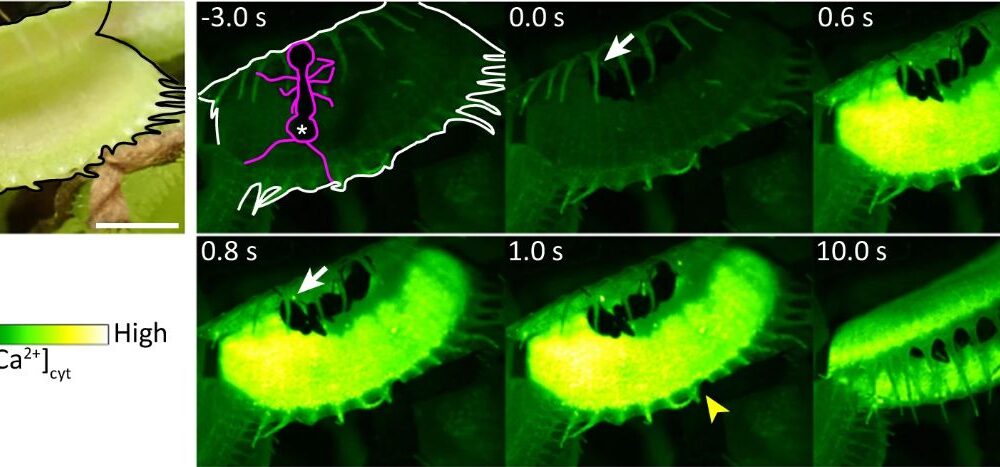Research published in Nature Communications has unveiled the role of a mechanosensor, identified as DmMSL10, in the rapid reflexes of the Venus flytrap (Dionaea muscipula). The study, led by Hiraku Suda and colleagues, explores how this unique plant captures prey using a sophisticated mechanism that reacts to touch.
The Venus flytrap, known for its spring-loaded trap, exhibits a remarkable ability to ensnare insects with incredible speed. While some carnivorous plants, such as the waterwheel plant (Aldrovanda vesiculosa), respond more gradually, the Venus flytrap and its close relative, D. glanduligera, can react within seconds. This study provides new insights into the cellular processes that underpin these rapid movements.
The research demonstrates that the sensory hairs lining the leaves of the Venus flytrap are sensitive to mechanical stimuli through calcium threshold signals. While the basic premise was previously understood, the specific mechanisms remained unclear until this investigation. The absence of the DmMSL10 channel in a modified plant variant highlighted its essential role.
In experiments, both the wild-type and knockout variants of the Venus flytrap were subjected to mechanical stimulation. While both could initiate calcium ion release, the knockout variant displayed a significantly reduced rate of action potential generation. In contrast, the wild-type continued to respond even after stimulation ceased, illustrating the critical function of DmMSL10 in detecting minor stimuli necessary for prey capture.
A further experiment involved allowing ants to wander on the leaves of both plant variants. The wild-type Venus flytrap successfully captured the first ant, while the knockout variant remained unresponsive, failing to generate enough calcium signals to trigger closure. This stark contrast emphasizes the importance of DmMSL10 in the plant’s ability to identify and react to prey.
This discovery not only sheds light on the Venus flytrap’s unique adaptations but also opens avenues for further research into the evolutionary parallels between plant and animal mechanosensation. Understanding these processes could enhance our knowledge of how similar mechanisms have developed in various organisms across the natural world.
The findings contribute to the ongoing exploration of plant biology and may offer insights into how plants have evolved complex responses to their environments. As research continues, the implications of these discoveries could extend beyond botany, potentially influencing fields as diverse as ecology and bioengineering.







